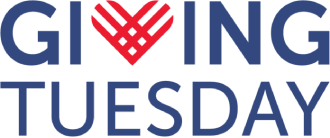After a surge of investment, attention, and development over the last two years, nonprofits stand at a crossroads with artificial intelligence (AI). Research shows that nearly half of nonprofit professionals report having only “some understanding” of AI, and in just under half of organizations, only one or two staff members are actively exploring its potential applications.
While the adoption of AI accelerates across other sectors, many nonprofits, particularly smaller organizations with limited resources, face a persistent knowledge gap. They lack data to address their challenges and often struggle to translate operational needs into technical solutions. Funders are increasingly calling for frameworks to help bridge this divide.
To better understand these challenges, the GivingTuesday Data Commons initiated a study to examine how nonprofit organizations were adopting (or not adopting) AI technologies like large language models and predictive analytics tools. This research led to the publication of the global AI Readiness Survey Report and the India Supplement Report, which examined not only uptake of AI tooling, but the current gaps in understanding, trust, and allocation of resources.
Building on the insights gleaned from these surveys and further enriched by consultations with a diverse array of sector stakeholders and the wealth of unstructured text answers provided in the global AI Readiness Survey, the GivingTuesday Data Commons created a valuable resource: the Generosity AI Problem Library. This repository draws from 980 problem library submissions, analysed to develop 125 open-ended research questions, each crafted to probe the potential avenues through which the nonprofit sector might leverage AI technology to effectively address its most pressing strategic and operational challenges. This library serves as a crucial first step in fostering a more user-centered approach to AI adoption within the realm of generosity.
Here we provide a summary of what we’ve learned about how nonprofit organizations see the potential application of AI technologies in their operations. It’s important to note that while numerous off-the-shelf AI solutions already exist for some of the challenges identified, our analysis has consistently revealed a significant disconnect: nonprofits are often either unaware of these readily available tools or lack the capacity and empowerment to effectively integrate them into their operations. Helping nonprofits better understand these nuances is driving our efforts in the coming months and years to more effectively bridge the existing gaps in knowledge, access, and implementation, through our Generosity AI initiative.
Methodology
We categorized the 125 research questions, or “problems,” into seven umbrella categories, with the intent to create a structured framework for identifying the sector’s most pressing concerns. While many of the areas below already have off-the-shelf solutions, our analyses have shown that nonprofits are either unaware of these tools, or are not empowered to take advantage of them. Our goal then is to better understand the issues felt by nonprofits, so that we can more effectively try to fill those gaps in the coming months and years. Here are the topic areas:
- Technology and Data Management (35 problems) – Encompassing challenges related to data collection, storage, analysis, security, and the overall technological infrastructure required to effectively utilize AI.
- Fundraising and Financial Sustainability (28 problems) – Focusing on leveraging AI to enhance donor acquisition, retention, engagement, and overall financial stability.
- Communications, Advocacy and Policy Change (21 problems) – Exploring the potential of AI in crafting impactful messaging, influencing public opinion, and policy advocacy work.
- Organizational and Program Effectiveness (19 problems) – Addressing how AI can optimize internal processes, improve program design and delivery, and enhance overall organizational impact.
- Resource Management (10 problems) – Investigating the use of AI in optimizing the allocation and utilization of various resources, including human capital, finances, and materials.
- Governance and Leadership (7 problems) – Examining how AI can support strategic decision-making, board engagement, and overall organizational leadership.
- Legal and Regulatory Compliance (5 problems) – Focusing on the ethical and responsible deployment of AI while navigating complex legal and regulatory landscapes.
The distribution of problems across these categories offers valuable insights into where nonprofit leaders currently perceive the most immediate and significant potential for AI to make a tangible difference. Notably, Technology and Data Management and Fundraising and Financial Sustainability together account for half of all identified problems, underscoring their critical importance in the eyes of the sector. For each of these topic areas, we provide a representative sample question directly from the problem library, followed by a concise analysis of the underlying challenges.
Why This Matters
The intent of our analysis is to enable a user-informed approach to AI deployment in the nonprofit sector by first understanding organizations’ challenges in their own words. Rather than forcing technology adoption without clear use cases, we aim to center the actual needs of nonprofits. Joseph Rowntree Foundation’s Grassroots and Non-profit Perspectives on Generative AI report reveals that most nonprofits remain excluded from conversations, with a majority not participating in broader AI debates due to lack of awareness, not being invited to engage, and resource limitations.
By identifying commonalities across organizations of different shapes and sizes, our aim is to facilitate knowledge sharing and collaborative problem-solving. According to the State of AI in Nonprofits report, there’s strong consensus (over 85%) that AI can help nonprofits become more efficient and effective, but only when properly aligned with organizational needs and capacities. We hope that the mapping we’ve provided helps nonprofit leadership and technology developers prioritize resources by highlighting where AI solutions are most wanted and needed.
Our Recommendations
Based on our analysis of the Generosity AI Problem Library and current research, we recommend the following actions to support effective AI adoption in the nonprofit sector:
- For Nonprofit Organizations: Prioritize data infrastructure improvements before implementing more advanced AI solutions. Invest in AI literacy for staff at all levels, especially given that the majority of organizations using AI tools have not received formal training. Start with well-defined problems that align with strategic priorities rather than implementing AI in broad strokes. Develop clear and concise AI usage policies to set appropriate expectations and to mitigate risk. We’ve curated a list of tools that are available to nonprofits to help address some of the greatest needs in our Tools & Initiatives library. In the coming months, we’ll be working on connecting these solutions to our Problem Library, so nonprofits can directly link problems with existing solutions.
- For Funders and Support Organizations: Direct funding toward capacity-building for data infrastructure and AI readiness. Support collaborations connecting technology experts with nonprofit domain experts to accelerate innovation. Consider how AI adoption impacts different-sized organizations; larger organizations adopt AI tools at nearly double the rate of smaller ones. In our AI Readiness Survey Report, smaller organizations with 15 staff or less identified the “lack of knowledge and training about AI” as their number one barrier to adoption. Invest in nonprofit-specific AI solutions addressing unique sector needs, as many commercial tools don’t account for nonprofit constraints.
- For Technology Developers: Design with nonprofit constraints in mind, limited expertise, smaller datasets, and budget restrictions. Prioritize explainability and transparency in AI systems to build trust in mission-critical applications. Develop modular solutions that can grow with organizations as they build capacity. Engage directly with nonprofits throughout the development process to ensure tools address real needs. Focus development on data management and fundraising, where nonprofits see the most immediate potential for impact.
Analysis by Topic Area
1. Technology and Data Management
Problem: How can we systematically organize and present up-to-date knowledge on AI and generosity to maximize accessibility and usefulness for nonprofits?
Analysis: Nonprofits often operate with limited and inconsistently distributed resources. This makes it challenging to keep up with the rapidly evolving landscape of AI. The State of AI in Nonprofits demonstrates the scale of this challenge, finding that over three quarters of nonprofits lack an AI strategy, highlighting a significant blindspot in technical planning and knowledge management. In problem library submissions, nonprofits have voiced a need for applications that can help them more effectively curate, organize, and access the information and data they already have.
2. Organizational and Program Effectiveness
Problem: How best to embed popular evaluation frameworks into an AI model, so that the model conforms to the components of the theory of change and spits out specific matrix components that can be used by a human to speed up good evaluation?
Analysis: Program evaluation demands considerable time and energy commitments from nonprofit executives—50% of whom report increased burnout concerns. By embedding established evaluation frameworks into AI models, organizations could dramatically streamline assessment processes while maintaining methodological rigor. Such tools can analyze program data against evaluation criteria, and generate structured metrics that human evaluators can validate and interpret, freeing leadership to focus on overarching strategic decisions. In addition, some nonprofits expressed interest in using AI tools to better structure and integrate organizational learning activities into operations. AI powered tools are being developed to help organizations curate their strategies for impact, capture data and tacit learning, explore opportunities for deeper learning and share lessons learned more easily.
3. Communications, Advocacy and Policy Change
Problem: How do public sentiment and perceptions influence giving behaviors, and how can nonprofits adapt?
Analysis: Nonprofits are increasingly expected to communicate in ways that are inclusive, compelling, and tailored to the diverse communities they serve. Yet many lack the capacity to create content that resonates across these audiences. While 63% of nonprofits report using AI in their communications, most are still exploring how these tools can go beyond basic content generation to support ethical storytelling and audience-specific engagement. AI offers potential to help organizations craft messages that are inclusive, relevant, and accessible to their communities with different needs – ultimately ensuring that campaigns and communications are not just seen, but understood and embraced by the communities they aim to reach.
4. Fundraising and Financial Sustainability
Problem: How can AI be used to create more accurate donor profiles for targeted fundraising efforts?
Analysis: Effective fundraising remains a challenge in today’s competitive landscape. 60% of organizations express strong interest in AI-powered fundraising solutions, recognizing an opportunity to streamline resource-intensive donor management. The technology divide particularly impacts smaller organizations without Customer Relationship Management (CRM) systems, despite facing the same expectation for personalized engagement. Nonprofit organizations are curious about whether AI offers the transformative potential to democratize access to advanced donor profiling and segmentation capabilities, which were previously the exclusive domain of larger institutions. This allows smaller nonprofits to cultivate deeper relationships with their individual and institutional donors and optimize their fundraising strategies for greater impact and financial sustainability.
5. Governance and Leadership
Problem: How can we improve our ability to attract and engage leaders (including boards) in our missions, while reducing administrative costs?
Analysis: Effective governance remains a challenge for nonprofits struggling to attract and retain quality board members. Traditional recruitment relies on personal networks and time-intensive relationship building, while administrative tasks like meeting preparation and documentation consume significant resources. AI offers opportunities to transform governance practices by automatically identifying potential board candidates through scanning professional networks and volunteer databases. AI can also streamline administration through automated meeting transcription, action item tracking, and board material preparation, enabling leaders to focus on strategic decision-making rather than administrative tasks.
6. Resource Management
Problem: How can AI-powered predictive analytics and collaborative networks improve resource allocation and operational efficiencies in service delivery?
Analysis: Nonprofits face significant inefficiencies in resource allocation, with administrative tasks consuming disproportionate staff time. According to Momentum’s Nonprofit Productivity Report, fundraisers spend up to 5 hours daily on emails alone—approximately $771 weekly in salary costs. AI-powered predictive analytics tools offer potential for helping organizations forecast future needs more accurately and alleviate administrative burdens, allowing staff to focus on maximizing impact. Volunteer management presents particularly compelling opportunities, as traditional coordination lacks standardization and creates friction in recruitment and retention. With 47% of organizations already using AI to reduce labor costs, extending these capabilities to volunteer management shows promise. AI tools can match volunteers to opportunities based on skills and preferences, automate communications, and provide engagement insights, while collaborative networks enhanced by AI could facilitate better resource sharing and coordination among nonprofits.
7. Legal and Regulatory Compliance
Problem: How can AI be ethically and safely deployed in the nonprofit sector while addressing concerns of privacy and bias considerations?
Analysis: Nonprofits face unique challenges when deploying AI, particularly regarding data privacy and algorithmic bias that could undermine service delivery. Despite these concerns, only 32% of organizations have enacted AI usage policies, leaving most vulnerable to compliance risk. Without the implementation of systematic approaches to proactively identify, assess, and effectively mitigate these inherent risks through robust governance frameworks and a strong emphasis on ethical considerations, nonprofits may inadvertently compromise the trust of their stakeholders and the communities they serve– or create unintended barriers to effective adoption of technologies.
Closing
As AI continues to evolve, it’s critical that nonprofit adoption is guided by real-world challenges, not assumptions. The Generosity AI Problem Library offers a roadmap to better align tools, training, and investment with what nonprofits truly need. By listening closely to the sector, we can build a more inclusive, effective, and equitable AI future for generosity. We invite you to explore the Problem Library and stay tuned for the development of this resource to connect problem statements directly with existing solutions.
This analysis was made possible by funding from the Gates Foundation.
References
Das, M., & Vryn, M. F. (2024). The AI Equity Project 2024. Namaste Data & Giving Compass.
DiGiovanni, J., & Levesque, J. (2025). The State of AI in Nonprofits: Benchmark Report on Adoption, Impact, and Trends. TappNetwork & TechSoup.
GivingTuesday. (2024). AI Readiness Survey Report. GivingTuesday Data Commons.
Ibison, Y., Guler, G., Remfry, E., Kherroubi Garcia, I., Barrow, N., & Duarte, T. (2024). Grassroots and non-profit perspectives on generative AI. Joseph Rowntree Foundation.
Im, C., Grundhoefer, S., & Smith Arrillaga, E. (2024). State of Nonprofits 2024: What Funders Need To Know. Center for Effective Philanthropy.
Momentum. (2024). The Nonprofit Productivity Report: How AI Can Redefine Workloads. Momentum.
3 Sided Cube. (2024). Harnessing AI for Good: Adoption Trends in the Charity Sector. 3 Sided Cube.



